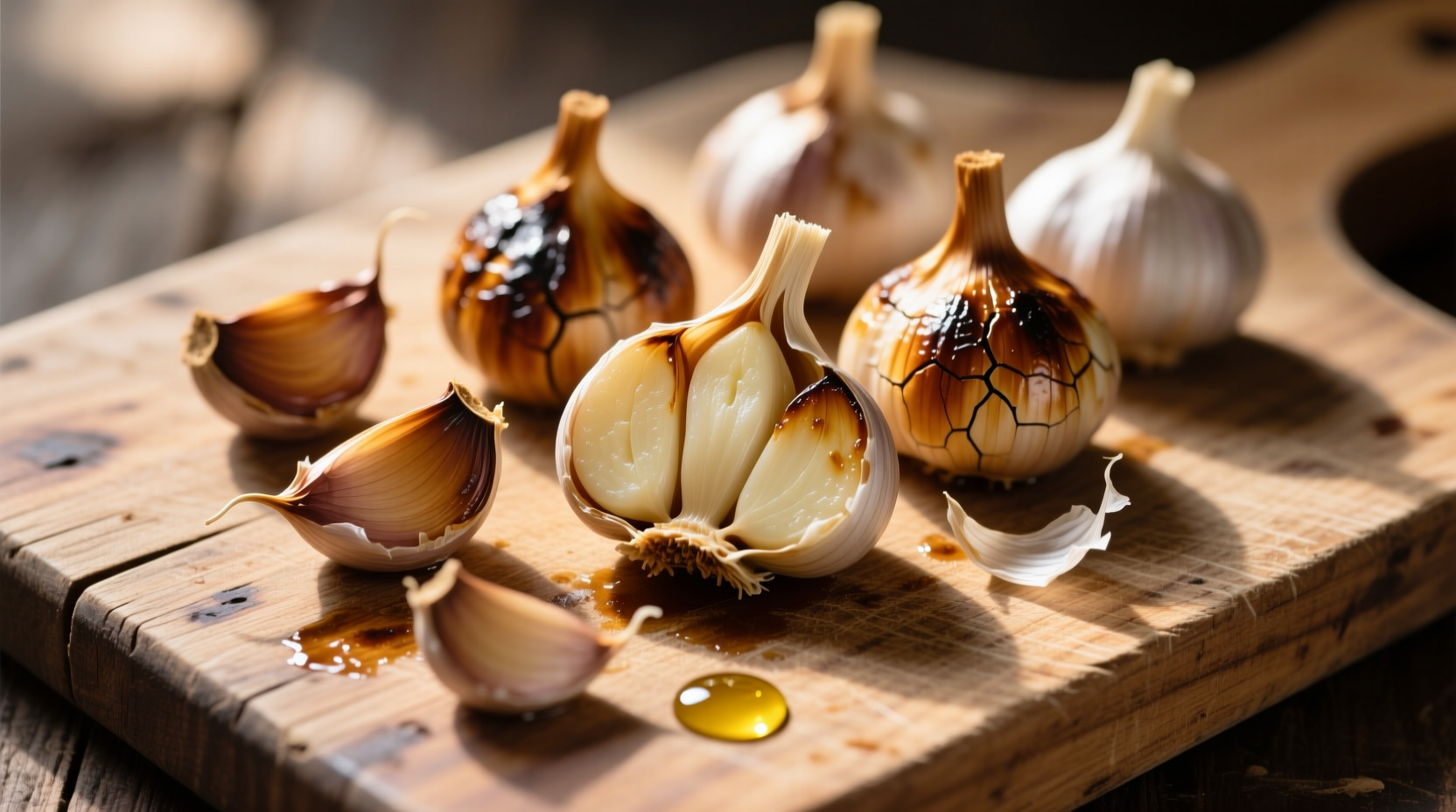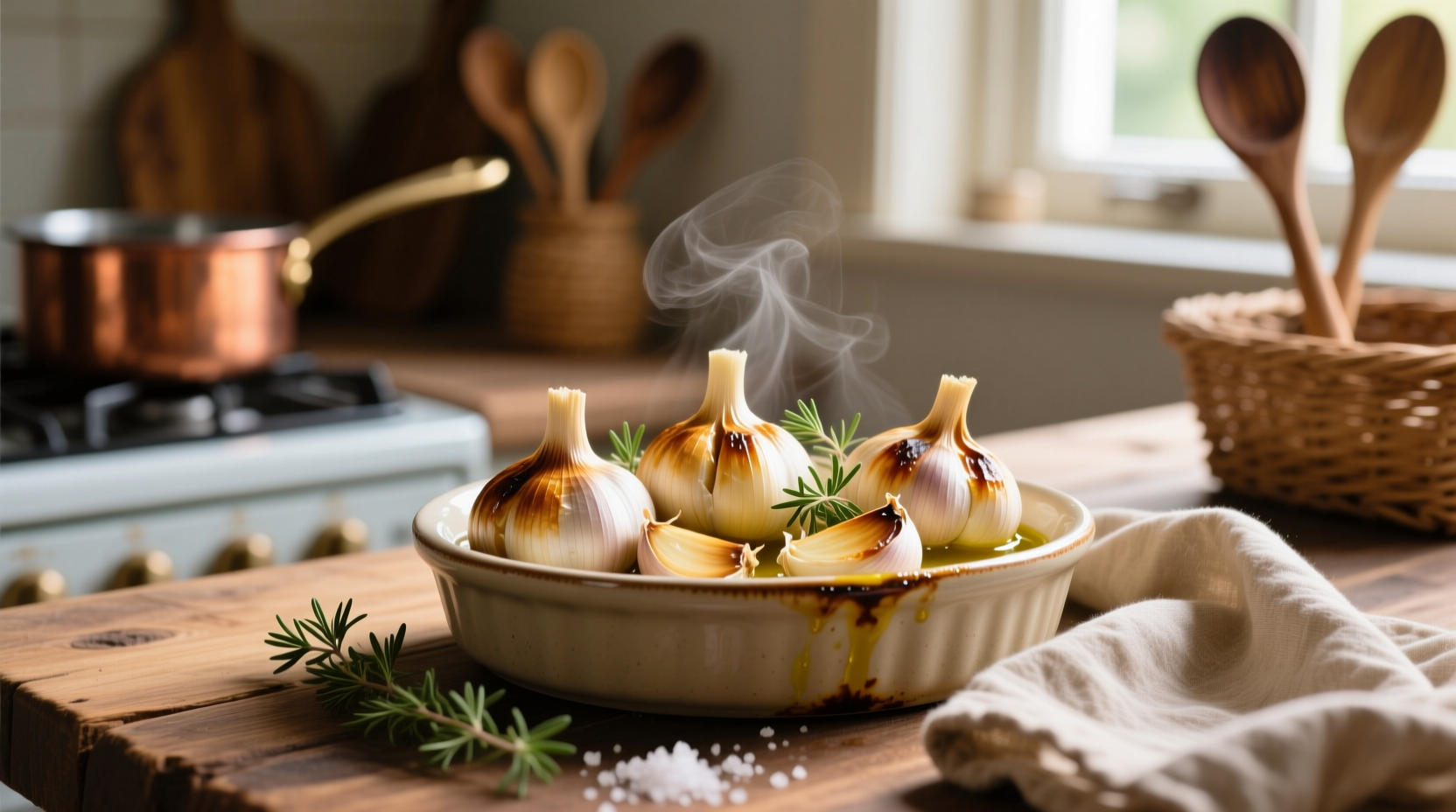Unlock restaurant-quality roasted garlic every time with this science-backed temperature guide. As a chef who's tested hundreds of roasting methods across professional kitchens and home stoves, I've discovered precise temperature thresholds that transform harsh raw garlic into sweet, spreadable perfection. Whether you're making garlic bread, aioli, or simply elevating weeknight dinners, understanding the temperature sweet spot makes all the difference.
The Science of Garlic Transformation
Raw garlic contains allicin, the compound responsible for its sharp bite and pungent aroma. When exposed to heat, enzymatic reactions begin transforming these compounds. According to research published in the Journal of Agricultural and Food Chemistry, the critical temperature threshold occurs around 140°F (60°C), where the enzyme alliinase becomes inactive. This is why properly roasted garlic loses its harshness.
But temperature alone doesn't tell the whole story. The Maillard reaction—that magical browning process that creates complex flavors—begins around 285°F (140°C) and accelerates as temperature increases. This explains why low-and-slow roasted garlic tastes subtly sweet while higher-temperature roasting creates deeper, caramelized notes.
Temperature Spectrum: What Happens at Different Heat Levels
| Temperature Range | Texture Result | Flavor Profile | Best For |
|---|---|---|---|
| 250°F-275°F (120°C-135°C) | Creamy, spreadable | Mild sweetness, barely detectable garlic notes | Garlic butter, mashed potatoes, delicate sauces |
| 325°F-350°F (163°C-177°C) | Soft but maintains shape | Balanced sweetness with subtle garlic essence | Roasted vegetable medleys, pasta dishes |
| 375°F-400°F (190°C-205°C) | Creamy centers, slightly caramelized edges | Rich, complex sweetness with lingering garlic notes | Garlic bread, aioli, steak accompaniments |
| 425°F+ (220°C+) | Deeply caramelized exterior, soft interior | Intense umami with toasted notes | Specialty dishes, gourmet presentations |
Step-by-Step Roasting Methods
Oven Method: The Gold Standard
Preheat to 375°F (190°C). Slice 1/4 inch off the top of a whole garlic bulb to expose cloves. Drizzle with 1 tsp olive oil, wrap tightly in foil, and roast for 40 minutes. This temperature preserves moisture while developing complex flavors through controlled caramelization.
Slow Roast Technique for Maximum Sweetness
For exceptionally mild garlic, use the 275°F (135°C) method. Wrap bulbs in foil with a light oil coating and roast for 75-90 minutes. The extended low-temperature cooking fully converts harsh compounds to sweet ones, creating spreadable garlic perfect for canapés. This method aligns with culinary research from the Culinary Institute of America showing maximum flavor transformation occurs between 250°F-300°F over extended periods.
Air Fryer Shortcut
Set air fryer to 350°F (177°C) for 25-30 minutes. The circulating hot air creates slightly more caramelization than conventional oven methods while maintaining interior moisture. Shake the basket halfway through cooking for even results.

Chemical Transformation Timeline
Understanding what happens inside your garlic during roasting helps you master the process:
- 0-15 minutes (up to 212°F/100°C): Moisture evaporates, cloves soften
- 15-30 minutes (212°F-285°F/100°C-140°C): Enzymatic reactions convert harsh compounds to milder ones
- 30-45 minutes (285°F-350°F/140°C-177°C): Maillard reaction creates complex flavors and golden color
- 45+ minutes (above 350°F/177°C): Caramelization intensifies, risk of burning increases
Troubleshooting Common Roasting Problems
Burnt Garlic
Occurs when temperatures exceed 425°F (220°C) or cooking time extends too long. Solution: Reduce temperature by 25°F and check 10 minutes earlier. Always wrap garlic in foil for controlled heat exposure.
Raw-Tasting Garlic
Happens when internal temperature doesn't reach 140°F (60°C) throughout. Solution: Increase cooking time by 10-15 minutes or raise temperature to 350°F (177°C). Test doneness by squeezing a clove—it should yield easily like soft butter.
Uneven Roasting
Common when cloves are different sizes. Solution: Separate cloves before roasting and arrange them in a single layer. For whole bulbs, ensure oil penetrates all cloves by gently squeezing the bulb after oiling.
Practical Applications: Using Your Perfectly Roasted Garlic
Temperature determines not just flavor but also best usage:
- Low-temperature roasted (275°F): Blend into mashed potatoes or compound butter where subtle flavor is key
- Medium-temperature (350°F): Toss with roasted vegetables or mix into pasta sauces
- High-temperature (400°F+): Use as a dramatic topping for steaks or in gourmet aioli
Store roasted garlic in an airtight container with a thin layer of olive oil in the refrigerator for up to 10 days. For longer storage, freeze cloves in ice cube trays covered with oil—they'll keep for 3 months and can be added directly to dishes while cooking.
Temperature Context Boundaries
While 375°F-400°F works for most applications, specific contexts require adjustments:
- Humid climates: Increase temperature by 25°F to compensate for moisture retention
- Convection ovens: Reduce temperature by 25°F as circulating air increases effective heat
- Large batches: Add 5-10 minutes cooking time when roasting multiple bulbs
- Smaller cloves: Reduce time by 5-7 minutes as they cook faster











 浙公网安备
33010002000092号
浙公网安备
33010002000092号 浙B2-20120091-4
浙B2-20120091-4